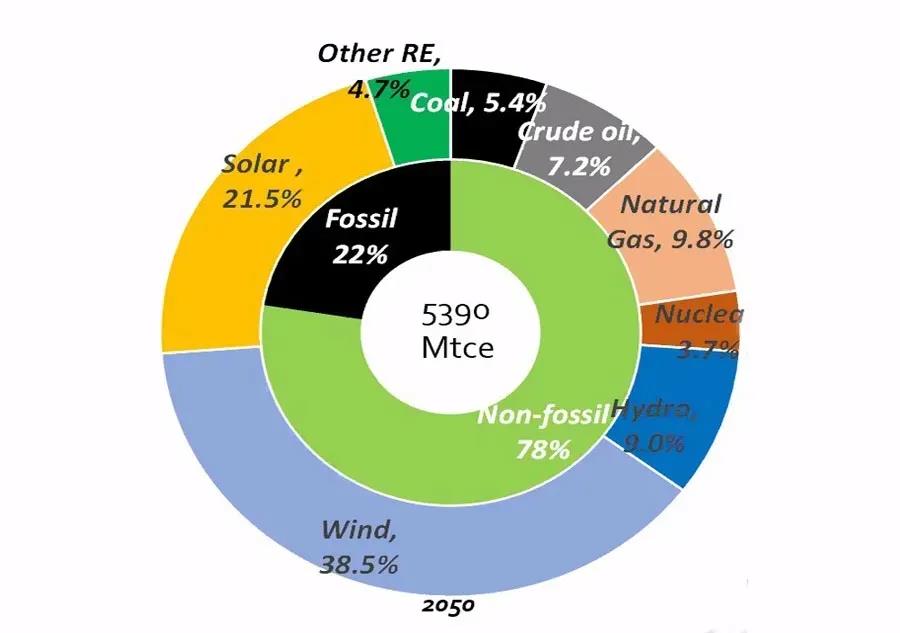Release of Jiangsu's "14th Five-Year" offshore wind power planning expansion
Recently, the Jiangsu Provincial Development and Reform Commission issued the "First Public Announcement of the Environmental Impact Assessment of Jiangsu’s Fourteenth Five-Year Plan for Offshore Wind Power", soliciting public opinions on the "Fourteenth Five-Year Plan of Offshore Wind Power Planning of Jiangsu’s Environmental Impact Report", and proposed a summary of the plan. By the "14th Five-Year Plan" period, Jiangsu Province has planned about 42 offshore wind farm sites with a planned installed capacity of 12.12 million kilowatts and a planned total area ofabout 1,780 square kilometers. This adjusted planning data is higher than the“14th Five-Year Plan for Offshore Wind Power”proposed in the“Special Plan for Renewable Energy Development in Jiangsu Province during the “14th Five-Year” (Draft for Comment) issued by the Jiangsu Energy Administration in November last year. The data of "8 million kilowatts" has been greatly improved.
At present, the installed capacity of offshore wind power in Jiangsu Province has ranked first in the country for many consecutive years. As of June 2020, the total installed capacity of offshore wind power in Jiangsu is 4.64 million kilowatts (4.64GW). As of the end of 2020, the total installed capacity of wind power in Jiangsu Province was 15.47 million kilowatts.

Rudong Offshore Wind Farm Layout
In the context of carbon neutrality, all provinces are increasing the development of wind energy-based renewable energy. In late January, Ren Yuzhi, deputy director of the New Energy Department of the National Energy Administration, pointed out at the press conference of the "China Renewable Energy Outlook Report 2020" that clean energy in the 14th Five-Year Plan period is the main body of energy increase, and my country will give priority to promoting wind, The high proportion and high-quality development of new energy represented by light.
Ren Yuzhi said at the report conference:
"In 2020, China's wind power photovoltaic power generation capacity will increase by 120 million kilowatts, achieving a historic breakthrough. At the same time, the utilization rate of wind power, photovoltaic power and hydropower will reach 95%. Renewable energy represented by wind power, photovoltaic power and hydropower is rapidly developing into China's energy The transformation has made a positive contribution."
According to data released by the National Energy Administration, 3.06 million kilowatts of offshore wind power will be installed nationwide in 2020. As of the end of 2020, the cumulative installed capacity of offshore wind power nationwide was approximately 9 million kilowatts. In the offshore wind power market, Jiangsu is riding the dust, but Zhejiang and Guangdong provinces are also catching up. Recently, Zhejiang Province plans to add 4.5GW of offshore wind power during the 14th Five-Year Plan period. Years ago, Guangdong Province fired the “first shot” of offshore wind power subsidies. Guiding Opinions on the Sustainable Development of the Industry (Draft for Solicitation of Comments), which clarifies the subsidy standard for offshore wind power in Guangdong after the central subsidy for offshore wind power is abolished in 2022. Undoubtedly, the actions of the surrounding provinces in offshore wind power planning have also provided the impetus for Jiangsu to increase the planned offshore wind power capacity.

According to the "China Renewable Energy Outlook Report 2020", in order to achieve the "Paris Agreement" the goal of controlling global temperature rise below 2 degrees Celsius. The proportion of non-fossil energy in China will continue to grow rapidly in the future, reaching 25% in the 14th Five-Year Plan, 34% in the 15th Five-Year Plan, and 42% in the 16th Five-Year Plan. Eventually, by 2050, the proportion of non-fossil energy in China will increase to 78%, coal consumption will drop by 90% compared to 2019, and carbon dioxide emissions will drop by 76% compared to 2019. By 2050, China's wind power will account for 38.5% of energy consumption, photovoltaics will account for 21.5%, followed by natural gas at 9.8%, and hydropower at 9%.

